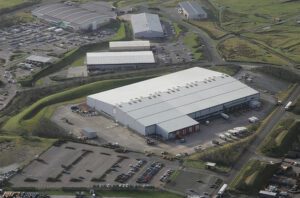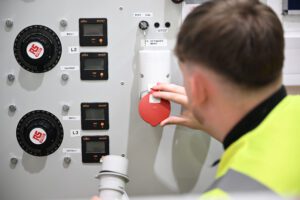The drive towards a sustainable future is in full swing, with renewable energy sources like solar and wind power taking centre stage. But amidst this green revolution, a question arises: can we further optimise energy efficiency by combining renewables with voltage optimisation (VO)?


Renewables’ Growth and Saving Energy
The International Energy Agency’s latest report paints a promising picture: renewable electricity capacity is skyrocketing. In 2023, it surged by an impressive 507 GW, nearly 50% more than the previous year. Solar panels and wind turbines are the driving force behind this growth, accounting for a whopping 96% of the increase.
While this growth is undeniably positive, energy and engineering experts are constantly seeking ways to enhance efficiency even further. One avenue they’re exploring is the integration of voltage optimisation.


Understanding Voltage Optimisation: Making Every Volt Count
Voltage optimisation is all about fine-tuning voltage levels to maximise energy efficiency without compromising performance. Your appliances are designed to operate at a specific voltage level. However, the electricity entering your building often exceeds this ideal level. This excess voltage translates to wasted energy – energy that you and the planet are paying for.
VO steps in to reduce the incoming voltage, which can be as high as 253 volts, to the optimal range of around 220-230 volts for your equipment. This not only saves energy but also extends the lifespan of your appliances by preventing wear and tear caused by excessive voltage.


The Synergy of VO and Renewables: A Powerful Partnership
VO and renewables aren’t competitors; they’re allies. Here’s a closer look at how they work together:
- Extending the Lifespan of Renewable Technologies: Micro-generators like PV inverters often need to boost their voltage higher than the grid supply. But excessive voltage can damage equipment and shorten its lifespan. VO mitigates this risk by reducing appliance consumption and protecting against over-voltage damage, whether the source is the grid or your solar panels.
- Maximising Generated Energy: VO doesn’t just optimise consumption; it also amplifies renewable generation. By reducing overall energy usage, VO increases the proportion of energy covered by renewables. This is crucial for making the most of your renewable energy systems like solar PV and wind power.


Comparative Analysis: Why Choose VO?
Unlike other energy-saving technologies, VO boasts an unrivalled return on investment, even outperforming solar power in this regard. With a typical ROI window of six months to a year, VO offers immediate and tangible benefits. This sets it apart from solar installations, which can take anywhere from 6 to 10 years to yield significant returns.
From the moment of installation, you’ll start seeing savings that accumulate over time, creating a steady and sustainable income stream that can be reinvested into your sustainability projects.


A Collaborative Approach to Sustainability
Contrary to popular belief, integrating VO doesn’t mean you can ditch other energy-saving technologies. In fact, it enhances their effectiveness. VO works hand-in-hand with renewables, safeguarding your equipment and boosting renewable energy coverage.
This collaboration between VO and renewables is key to maximising your sustainability efforts. It provides schools, organisations, and communities with a solid foundation for building a greener future.


Conclusion
In the quest for energy efficiency and sustainability, voltage optimisation emerges as a crucial ally. Technologies like VO aren’t just complementary to solar PV and other renewable generation methods; they’re essential companions, paving the way for a greener, more efficient world.


Zeron. More power to the planet.








